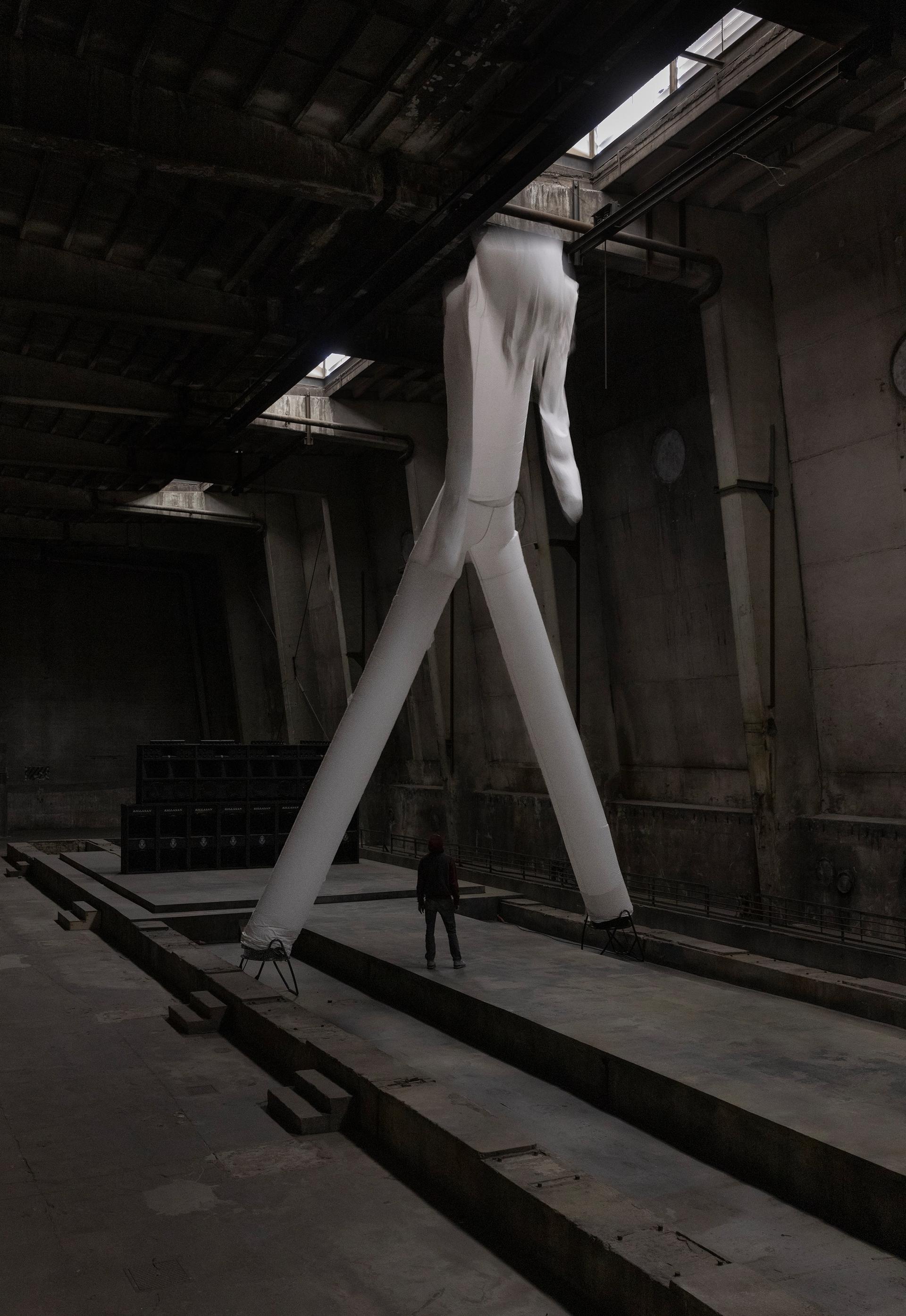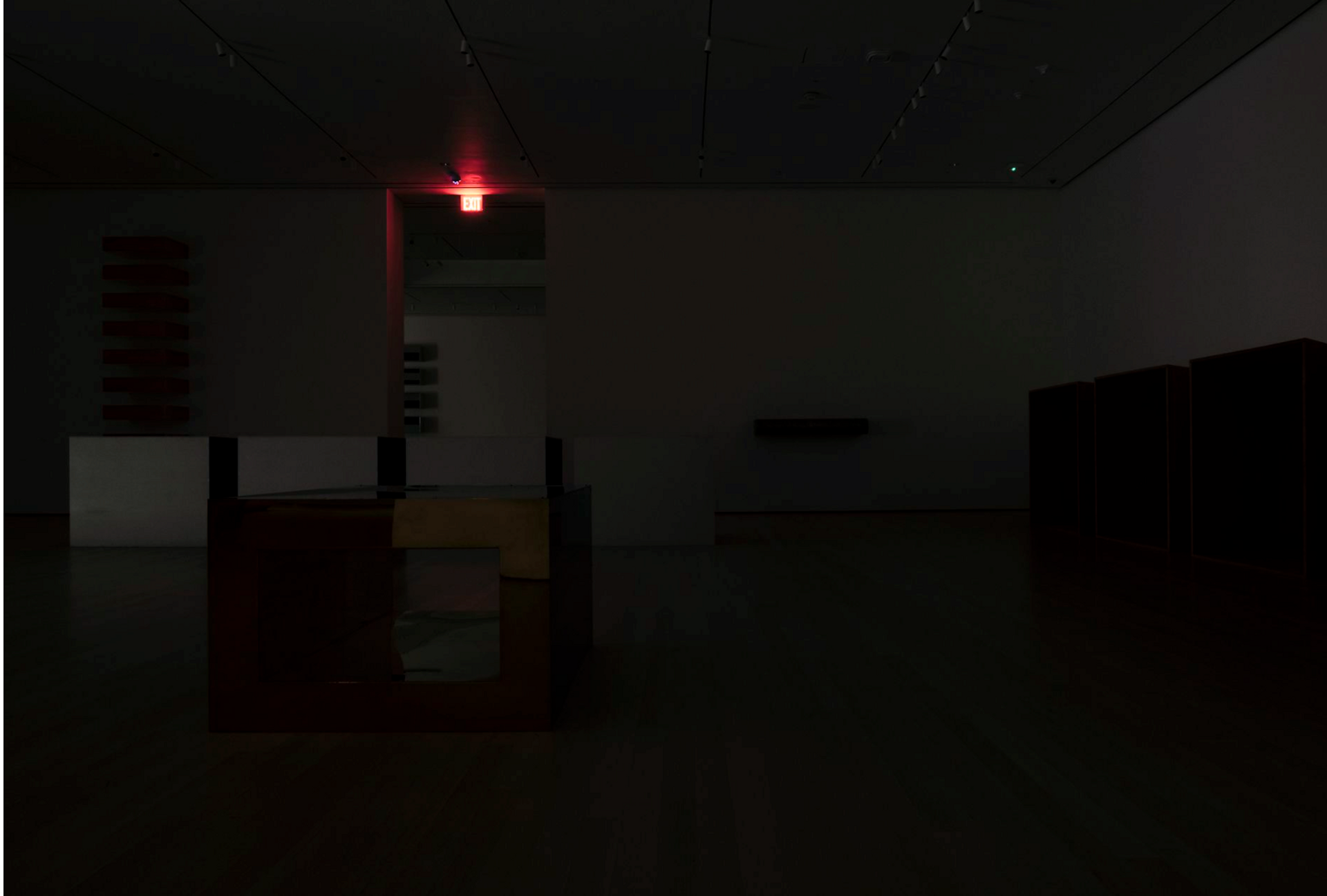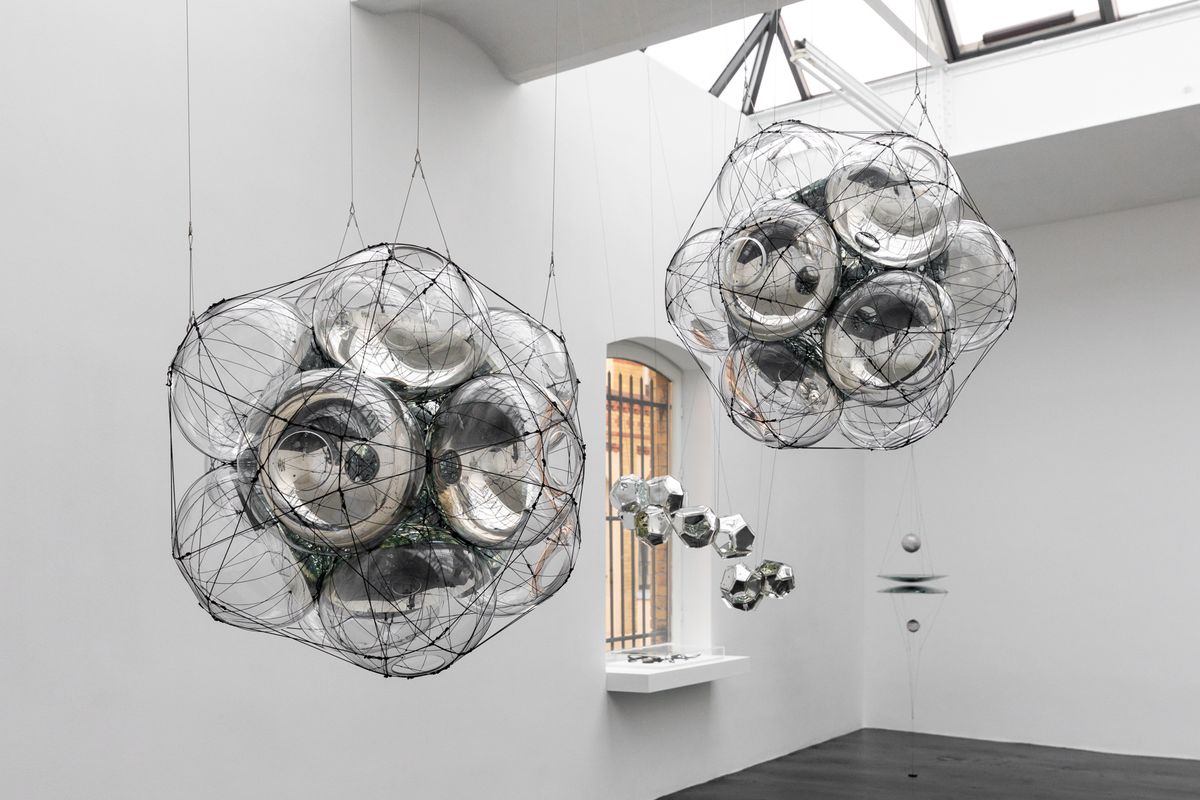Tomás Saraceno: We do not all breathe the same air
Until 31 October, neugerriemschneider, Linienstr. 155
The element of air is present in virtually every work by the Argentinian artist Tomás Saraceno. It lifts up his solar-powered balloons and gently moves the dense, delicately suspended spiderwebs he presents as quasi-sculptures. In his first ever exhibition at neugerriemschneider, the artist shows new and recent works that consider the physical composition of air, and how imbalanced global structures affect what we breathe. A number of works visualise the difference in air quality between cities in wealthier regions and those in the Global South such as Printed Matter (2018), a series of photo giclée prints, made from special ink created out of pollution extracted from the air in Mumbai.
In further science projects-cum-artworks Saraceno shows how black carbon can cling to a spider’s web and presents a light installation to draw attention to the invisible particles that are suspended in our atmosphere. Suspended from the ceiling are large bubbles of solidified molten glass that have been blown by Saraceno using an ancient technique. Embedded with plant matter, these structures which encase the artist's exhaled breath seem like propositions for futuristic eco-habitats. Importantly, at no point during the exhibition does Saraceno sacrifice beauty in order to underline his pressing concerns. This commitment to artistry seems to emphasise his genuine belief in human creativity as a means of overcoming the climate crisis, giving the show a tone that is strategic as well as poetic. To this end, Saraceno has asked neugerriemschneider to adjust its opening hours to conserve electricity during the exhibition's run and has made the gallery permanently shift to renewable energy sources: small shifts that reify how art can begin to make a difference.

Cyprien Gaillard's Visitant (no dancing 2020-2021) (2021). Photo: Timo Ohler
Berlin Atonal presents Metabolic Rift
Until 30 October, Kraftwerk Berlin, Köpenickerstr. 70
It is difficult to initially comprehend the vast scale of the abandoned Heizkraftwerk thermal plant in Berlin-Mitte. It is only midway through Metabolic Rift, a guided exhibition/performance/ghost train through the Brutalist GDR-era building, that one truly appreciates its sheer enormity. After being beckoned up 15 flights of stairs by an artist performing a fey Tino Sehgal choreography and wailing a dissonant aria, visitors emerge into a room with ceilings the height of a cathedral. Within moments, Cyprien Gaillard’s giant nylon figure inflates to fill the space and then, buoyed by two industrial fans and accompanied by cinematic techno music, begins to dance. Gaillard's breathtaking and ridiculous homage to nightclub grooving is one of around 20 works within this group show that plays on the building’s epic proportions and chequered political history. Built around the same time as the Berlin Wall, the plant provided electricity and heat to East Germany for over 30 years before falling into disuse in the 1990s, and in 2007 the techno club Tresor moved into its lower floors.
The exhibition begins in the labyrinthine basement and control rooms, where narrow corridors and snaking pipes provide a fitting home for Giulia Cenci's skeletal sculpture of steel rods and repurposed motor parts. In an adjoining room, a sound and video installation by the artist and composer Pan Daijing layers breathy voices to further emphasise the claustrophobic effect of the underground space. During the show's second half, visitors are allowed to roam freely through a series of cavernous rooms where an installation of several wrecked cars by Marcel Weber with accompanying sounds from the vocalist Lyra Pramuk calls to mind the aftermath of a parking lot rave.

Louise Lawler's Untitled (Brass and Blue) (2021). Courtesy of the artist and Sprüth Magers
Louise Lawler: Lights Off, After Hours, In the Dark
Until 31 October, Sprüth Magers, Oranienburger Str. 18
At first glance, Louise Lawler's new series of expansive, large-scale photographs printed on aluminium plates appear to be of shadowy boxes in darkened storage rooms—non-things in non-places. Those with a finely tuned knowledge of art history (or copies of the exhibition press release) can soon decipher these shapes as the outlines of works by the minimalist master Donald Judd that were shown at Judd, his Museum of Modern Art retrospective which closed last year. Lawler has spent much of her career appropriating and imitating works by other artists under the guise of "institutional critique", and by photographing Judd's works in the dark she gives them a totally new life, portraying them as they are rarely seen, except perhaps by night security guards. The result is a show that seems to both support Judd's wish to rid his work of the "relational qualities" possessed by traditional art forms such as painting and sculpture, while also denying these works much of the materiality and form that Judd was so keen to foreground. Most interestingly, by plunging Judd into the dark, Lawler's metal photographs take on their own complex materiality, gaining a dense, sculptural quality that would be lost if the lights were turned on.


